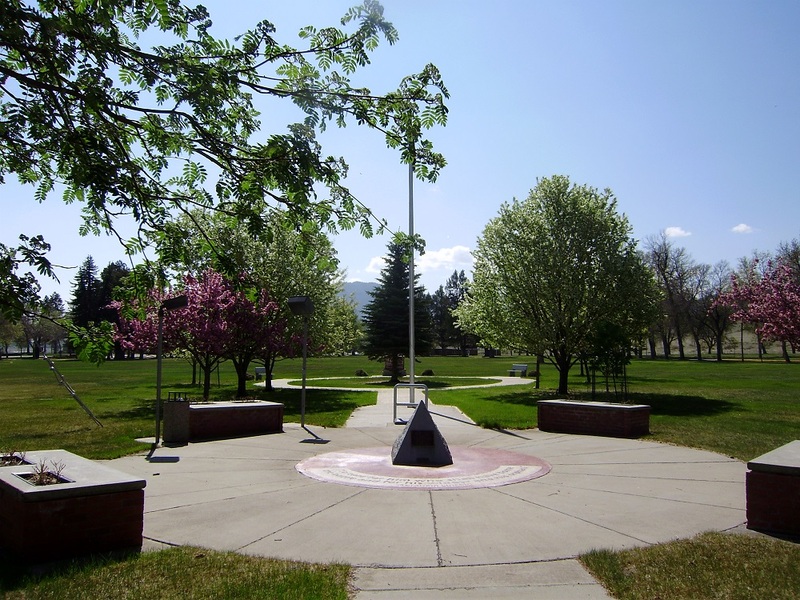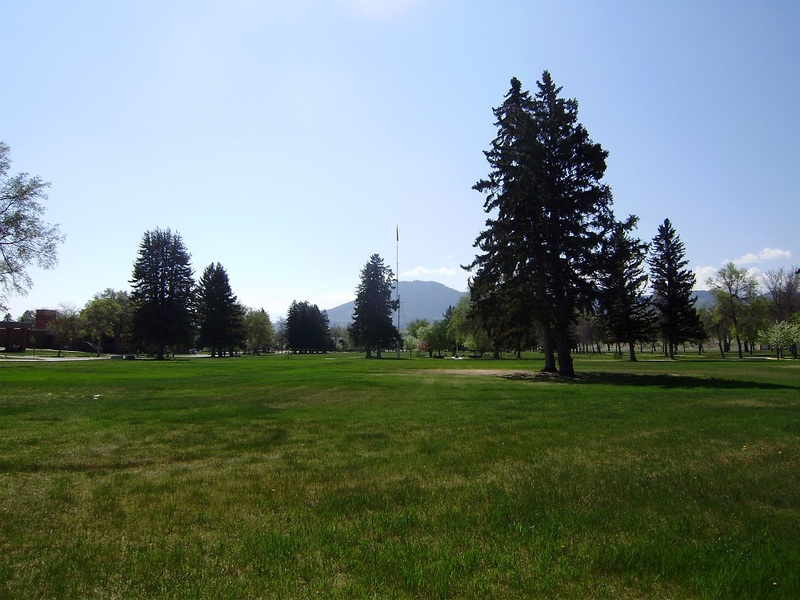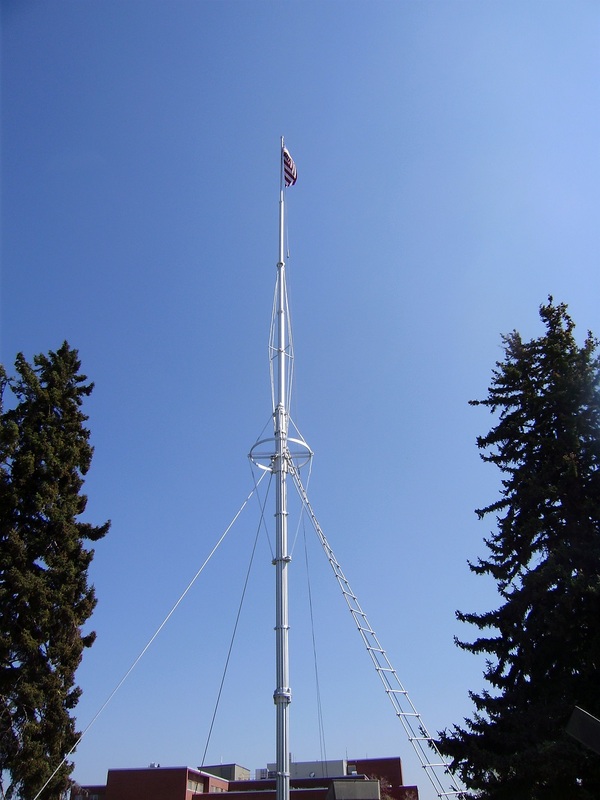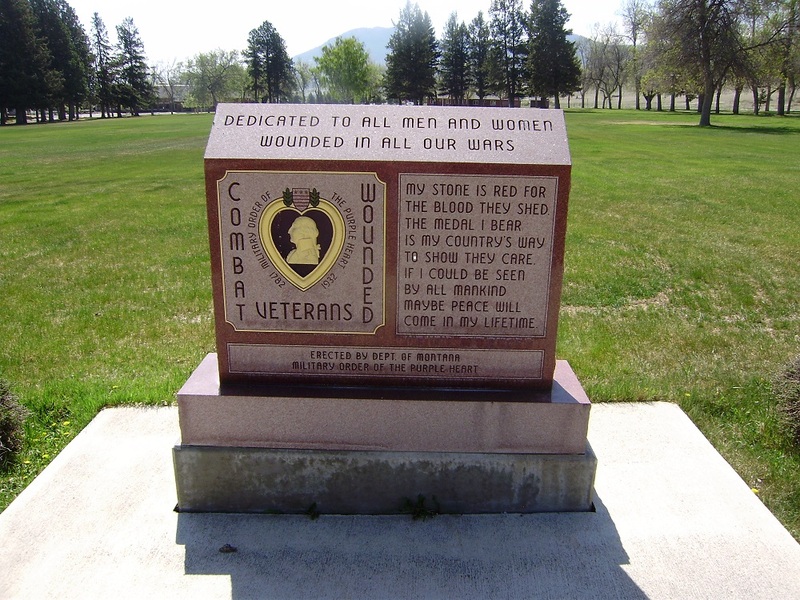
Historic military forts across the United States differ greatly, but most share a common landscape feature—the parade ground—where soldiers practiced military drills, held ceremonies, and gathered for recreation. Fort Harrison’s parade ground has changed little since 1895. Using standardized plans, contractors created a rectangular 1000-foot-by-400-foot parade ground with triangular end points. In 1896, Companies B, D, and E of the 22nd Infantry installed a flagpole and cannon near the center of the parade ground. African American soldiers of the 24th Infantry Regiment, who had served with distinction during the 1899-1902 Philippine-American War, completed landscaping the parade grounds and residential areas in 1903. Cottonwood, mountain ash, and spruce trees, purchased from the State Nursery Company, were the same species as those planted at the nearby Broadwater Hotel and Natatorium. After World War I, the grounds served as recreation space for hospital patients and staff. Over a century later, new buildings to the north have changed the parade ground’s shape, but the lawn and many mature trees planted by past soldiers still reflect the fort’s early days.
Images



